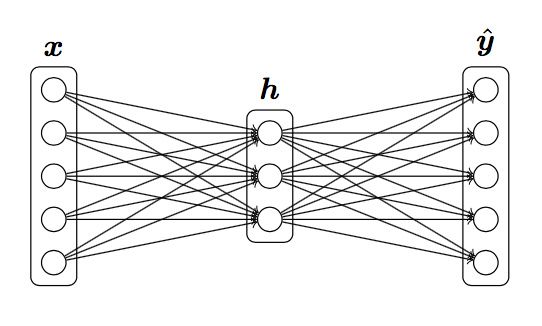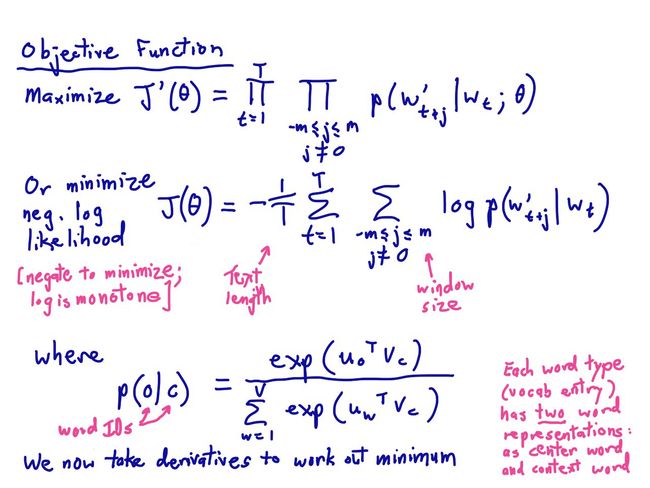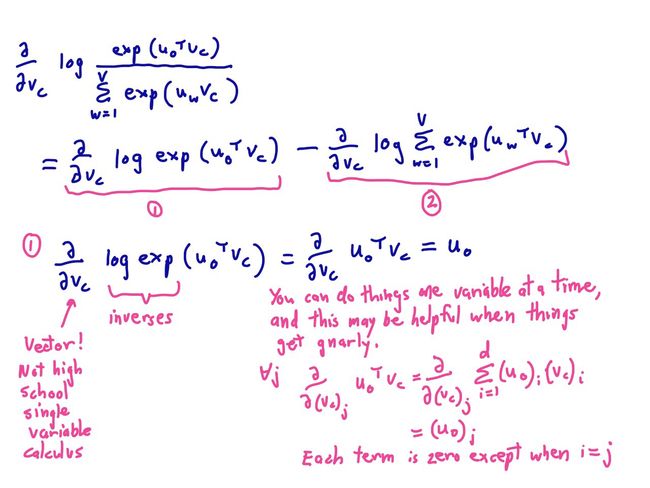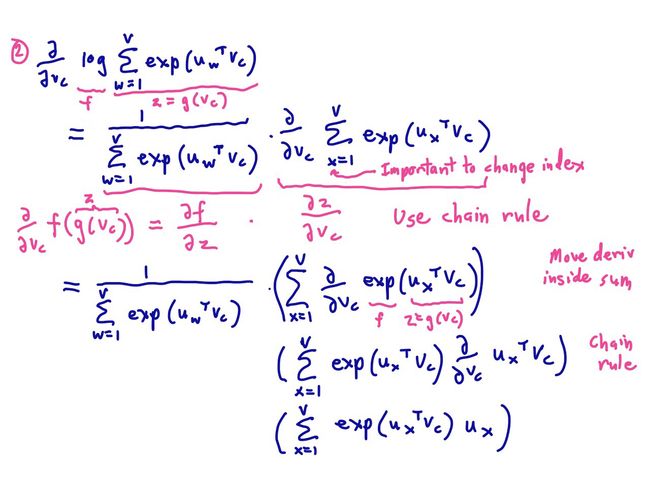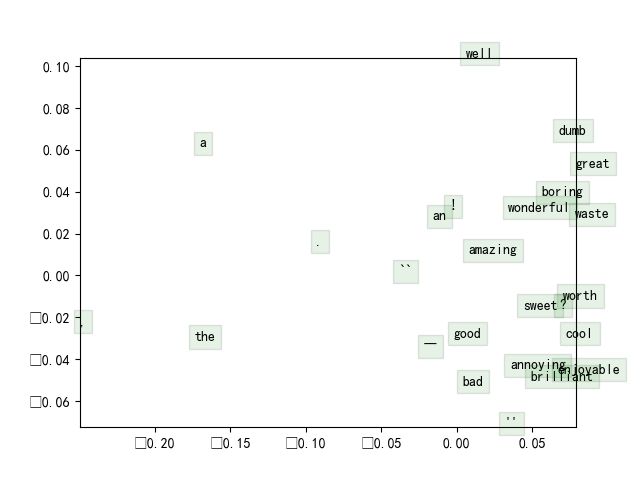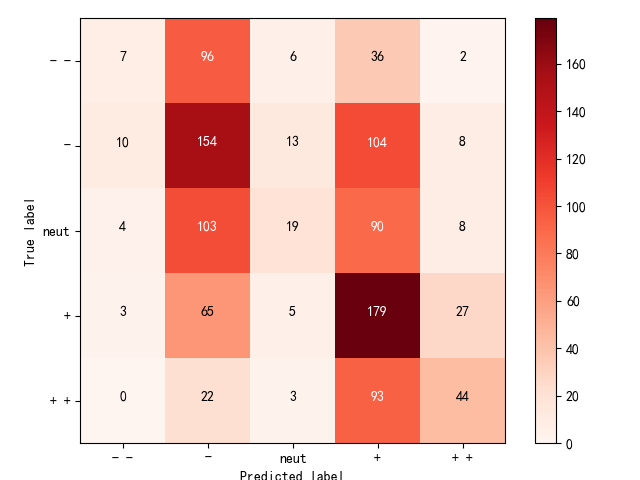https://web.stanford.edu/class/archive/cs/cs224n/cs224n.1174/syllabus.html 第一次作业笔记
Softmax
softmax常数不变性
由于,因此多余的可以上下消除,于是:
这里
发现了一个Softmax非常好的性质,即使两个数都很大比如 1000与 1001,其结果与 1和2的结果相同,即其只关注数字之间的差,而不是差占的比例。
Python实现
之所以介绍Softmax常数不变性,是因为发现给定的测试用例非常大,直接计算次方
import numpy as np
def softmax(x):
orig_shape = x.shape
if len(x.shape) > 1:
# Matrix
### YOUR CODE HERE
x_max = np.max(x, axis=1).reshape(x.shape[0], 1)
x -= x_max
exp_sum = np.sum(np.exp(x), axis=1).reshape(x.shape[0], 1)
x = np.exp(x) / exp_sum
### END YOUR CODE
else:
# Vector
### YOUR CODE HERE
x_max = np.max(x)
x -= x_max
exp_sum = np.sum(np.exp(x))
x = np.exp(x) / exp_sum
### END YOUR CODE
#or: x = (np.exp(x)/sum(np.exp(x)))
assert x.shape == orig_shape
return x
def test_softmax_basic():
"""
Some simple tests to get you started.
Warning: these are not exhaustive.
"""
print("Running basic tests...")
test1 = softmax(np.array([1,2]))
print(test1)
ans1 = np.array([0.26894142, 0.73105858])
assert np.allclose(test1, ans1, rtol=1e-05, atol=1e-06)
test2 = softmax(np.array([[1001,1002],[3,4]]))
print(test2)
ans2 = np.array([
[0.26894142, 0.73105858],
[0.26894142, 0.73105858]])
assert np.allclose(test2, ans2, rtol=1e-05, atol=1e-06)
test3 = softmax(np.array([[-1001,-1002]]))
print(test3)
ans3 = np.array([0.73105858, 0.26894142])
assert np.allclose(test3, ans3, rtol=1e-05, atol=1e-06)
print("You should be able to verify these results by hand!\n")
if __name__ == "__main__":
test_softmax_basic()
神经网络基础
梯度检查
Sigmoid导数
定义如下,发现。
即:
交叉熵定义
当使用交叉熵作为评价指标时,求梯度:
- 已知:
- 交叉熵:
其中是指示变量,如果该类别和样本的类别相同就是1,否则就是0。因为y一般为one-hot类型。
而 表示每种类型的概率,概率已经过softmax计算。
对于交叉熵其实有多重定义的方式,但含义相同:
分别为:
二分类定义
- y——表示样本的label,正类为1,负类为0
- p——表示样本预测为正的概率
多分类定义
- y——指示变量(0或1),如果该类别和样本的类别相同就是1,否则是0;
- p——对于观测样本属于类别c的预测概率。
但表示的意思都相同,交叉熵用于反映 分类正确时的概率情况。
Softmax导数
进入解答:
- 首先定义和分子分母。
-
对求导:
注意: 分子是 ,分母是所有的 ,而求偏微的是 。
- 因此,根据i与j的关系,分为两种情况:
- 当 时:
$f_i' = e^{\theta_i}$,$g_i' = e^{\theta_j}$
$\begin{align} \frac{\partial{S_i}}{\partial{\theta_j}} &=\frac{e^{\theta_i}\sum^{k}_{k=1}e^{\theta_k} - e^{\theta_i}e^{\theta_j}}{(\sum^{k}_{k=1}e^{\theta_k})^2} \\ &= \frac{e^{\theta_{i}}}{\sum_{k} e^{\theta_{k}}} \times \frac{\sum_{k} e^{\theta_{k}} – e^{\theta_{j}}}{\sum_{k} e^{\theta_{k}}} \nonumber \\ &= S_{i} \times (1 – S_{i}) \end{align}$
- 当时:
$f'_{i} = 0 $,$g'_{i} = e^{\theta_{j}}$
$\begin{align} \frac{\partial{S_i}}{\partial{\theta_j}} &= \frac{0 – e^{\theta_{j}} e^{\theta_{i}}}{(\sum_{k} e^{\theta_{k}})^{2}} \\&= – \frac{e^{\theta_{j}}}{\sum_{k} ^{\theta_{k}}} \times \frac{e^{\theta_{i}}}{\sum_{k} e^{\theta_{k}}} \\ &=-S_j \times S_i\end{align}$
交叉熵梯度
计算 ,根据链式法则,
$\begin{align} \frac{\partial CE}{\partial \theta_{i}} &= – \sum_{k} y_{k} \frac{\partial log S_{k}}{\partial \theta_{i}} \\&= – \sum_{k} y_{k} \frac{1}{S_{k}} \frac{\partial S_{k}}{\partial \theta_{i}} \\ &= – y_{i} (1 – S_{i}) – \sum_{k \ne i} y_{k} \frac{1}{S_{k}} (-S_{k} \times S_{i}) \\ &= – y_{i} (1 – S_{i}) + \sum_{k \ne i} y_{k} S_{i} \\ &= S_{i}(\sum_{k} y_{k}) – y_{i}\end{align}$
因为,所以
反向传播计算神经网络梯度
根据题目给定的定义:
已知损失函数,,
求,,,,
解答:
反向传播,定义, :
对于输出层来说,的输入为 ,而输出则为
上小节计算得到 的梯度为 ,
可以使用 替代 ,得到
# 推测这里使用点乘的原因是经过计算后,应该是一个标量,而不是向量。
于是得到:
与计算相似,计算
如果仍然对反向传播有疑惑
可以参考一文弄懂神经网络中的反向传播法——BackPropagation,画图出来推导一下。
如何直观地解释 backpropagation 算法? - Anonymous的回答 - 知乎
https://www.zhihu.com/question/27239198/answer/89853077
参数数量
代码实现
- sigmoid和对应的梯度
def sigmoid(x):
s = 1 / (1 + np.exp(-x))
return s
def sigmoid_grad(s):
ds = s * (1-s)
return ds
- 梯度检查
import numpy as np
import random
# First implement a gradient checker by filling in the following functions
def gradcheck_naive(f, x):
""" Gradient check for a function f.
Arguments:
f -- a function that takes a single argument and outputs the
cost and its gradients
x -- the point (numpy array) to check the gradient at
"""
rndstate = random.getstate()
random.setstate(rndstate)
fx, grad = f(x) # Evaluate function value at original point
h = 1e-4 # Do not change this!
# Iterate over all indexes in x
it = np.nditer(x, flags=['multi_index'], op_flags=['readwrite'])
while not it.finished:
ix = it.multi_index
print(ix)
# Try modifying x[ix] with h defined above to compute
# numerical gradients. Make sure you call random.setstate(rndstate)
# before calling f(x) each time. This will make it possible
# to test cost functions with built in randomness later.
### YOUR CODE HERE:
x[ix] += h
new_f1 = f(x)[0]
x[ix] -= 2*h
random.setstate(rndstate)
new_f2 = f(x)[0]
x[ix] += h
numgrad = (new_f1 - new_f2) / (2 * h)
### END YOUR CODE
# Compare gradients
reldiff = abs(numgrad - grad[ix]) / max(1, abs(numgrad), abs(grad[ix]))
if reldiff > 1e-5:
print("Gradient check failed.")
print("First gradient error found at index %s" % str(ix))
print("Your gradient: %f \t Numerical gradient: %f" % (
grad[ix], numgrad))
return
it.iternext() # Step to next dimension
print("Gradient check passed!")
- 反向传播
def forward_backward_prop(data, labels, params, dimensions):
"""
Forward and backward propagation for a two-layer sigmoidal network
Compute the forward propagation and for the cross entropy cost,
and backward propagation for the gradients for all parameters.
Arguments:
data -- M x Dx matrix, where each row is a training example.
labels -- M x Dy matrix, where each row is a one-hot vector.
params -- Model parameters, these are unpacked for you.
dimensions -- A tuple of input dimension, number of hidden units
and output dimension
"""
### Unpack network parameters (do not modify)
ofs = 0
Dx, H, Dy = (dimensions[0], dimensions[1], dimensions[2])
W1 = np.reshape(params[ofs:ofs+ Dx * H], (Dx, H))
ofs += Dx * H
b1 = np.reshape(params[ofs:ofs + H], (1, H))
ofs += H
W2 = np.reshape(params[ofs:ofs + H * Dy], (H, Dy))
ofs += H * Dy
b2 = np.reshape(params[ofs:ofs + Dy], (1, Dy))
### YOUR CODE HERE: forward propagation
h = sigmoid(np.dot(data,W1) + b1)
yhat = softmax(np.dot(h,W2) + b2)
### END YOUR CODE
### YOUR CODE HERE: backward propagation
cost = np.sum(-np.log(yhat[labels==1]))
d1 = (yhat - labels)
gradW2 = np.dot(h.T, d1)
gradb2 = np.sum(d1,0,keepdims=True)
d2 = np.dot(d1,W2.T)
# h = sigmoid(z_1)
d3 = sigmoid_grad(h) * d2
gradW1 = np.dot(data.T,d3)
gradb1 = np.sum(d3,0)
### END YOUR CODE
### Stack gradients (do not modify)
grad = np.concatenate((gradW1.flatten(), gradb1.flatten(),
gradW2.flatten(), gradb2.flatten()))
return cost, grad
word2vec
关于词向量的梯度
在以softmax为假设函数的word2vec中
是中央单词的词向量
() 是第 个词语的词向量。
假设使用交叉熵作为损失函数, 为正确单词 (one-hot向量的第 维为1),请推导损失函数关于的梯度。
提示:
其中 = ,,, 是所有词向量构成的矩阵。
解答:
首先明确本题给定的模型是skip-gram ,通过给定中心词,来发现周围词的。
定义 , 表示所有词向量组成的矩阵,而 也表示的是一个词向量。
hint: 如果两个向量相似性越高,则乘积也就越大。想象一下余弦夹角,应该比较好明白。
因为中所有的词向量,都和乘一下获得。
是干嘛用的呢? 内就有W个值,每个值表示和 相似程度,通过这个相似度选出最大值,然后与实际对比,进行交叉熵的计算。
已知: 和
因此:
除了上述表示之外,还有另一种计算方法
[图片上传失败...(image-53cc75-1557025564256)]
于是:
仔细观察这两种写法,会发现其实是一回事,都是 观察与期望的差()。
推导lookup-table梯度
与词向量相似
负采样时的梯度推导
假设进行负采样,样本数为,正确答案为,那么有。负采样损失函数定义如下:
其中:
解答:
首先说明一下,从哪里来的,参考note1 第11页,会有一个非常详细的解释。
全部梯度
推导窗口半径的上下文[word ,...,word ,word ,word ,...,word ]时,skip-gram 和 CBOW的损失函数 ( 是正确答案的词向量)或说 或 关于每个词向量的梯度。
对于skip-gram来讲,的上下文对应的损失函数是:
这里 是离中心词距离的那个单词。
而CBOW稍有不同,不使用中心词而使用上下文词向量的和作为输入去预测中心词:
然后CBOW的损失函数是:
解答:
根据前面的推导,知道如何得到梯度和。那么所求的梯度可以写作:
skip-gram
CBOW
补充部分:
-
矩阵的每个行向量的长度归一化
x = x/np.linalg.norm(x,axis=1,keepdims=True)
-
在斯坦福情感树库上训练词向量
直接运行
q3_run即可
情感分析
特征向量
最简单的特征选择方法就是取所有词向量的平均
sentence_index = [tokens[i] for i in sentence]
for index in sentence_index:
sentVector += wordVectors[index, :]
sentVector /= len(sentence)
正则化
values = np.logspace(-4, 2, num=100, base=10)
调参
bestResult = max(results, key= lambda x: x['dev'])
惩罚因子对效果的影响
confusion matrix
关联性排序的一个东西,对角线上的元素越多,预测越准确。


